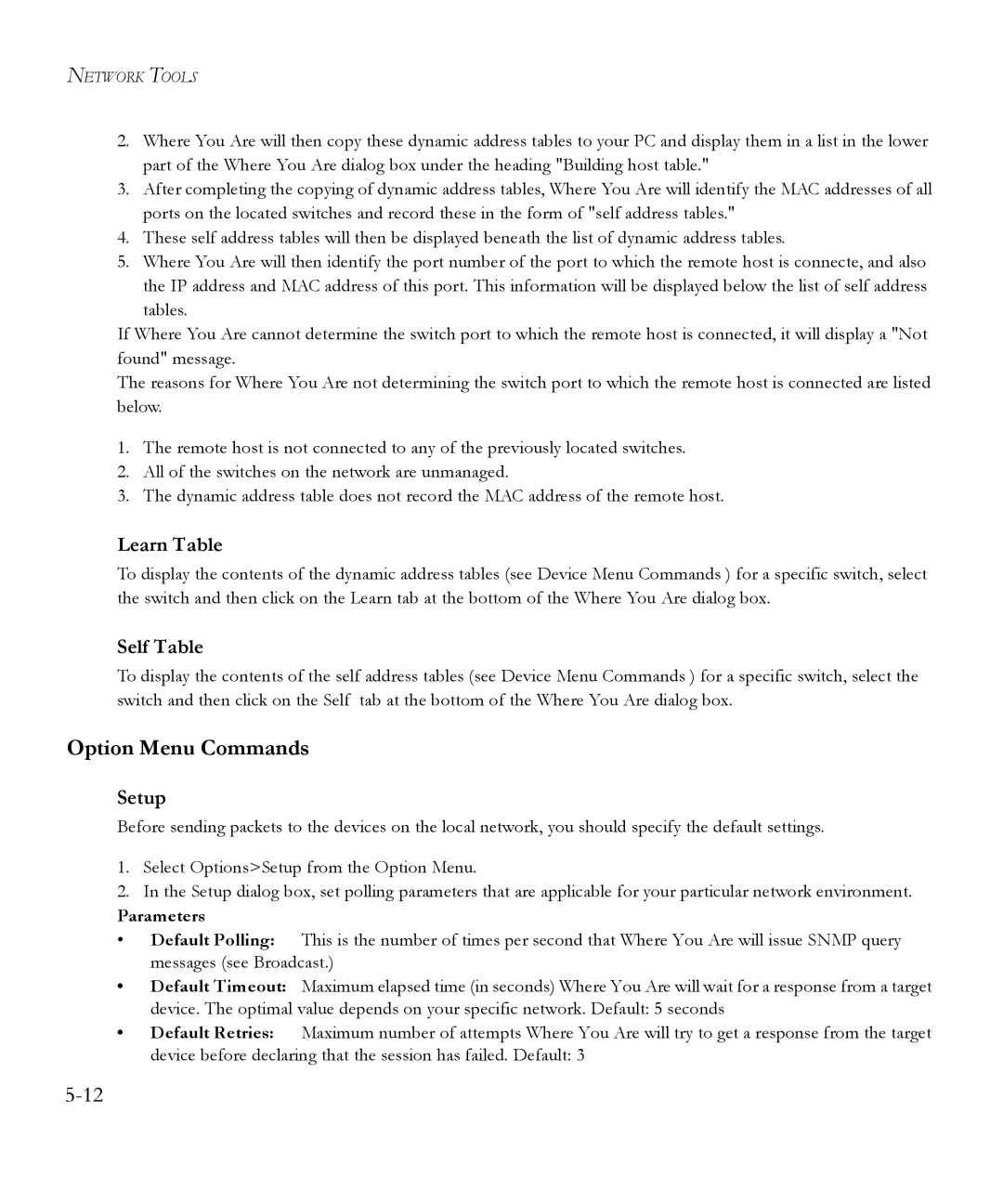NETWORK TOOLS
2.Where You Are will then copy these dynamic address tables to your PC and display them in a list in the lower part of the Where You Are dialog box under the heading "Building host table."
3.After completing the copying of dynamic address tables, Where You Are will identify the MAC addresses of all ports on the located switches and record these in the form of "self address tables."
4.These self address tables will then be displayed beneath the list of dynamic address tables.
5.Where You Are will then identify the port number of the port to which the remote host is connecte, and also the IP address and MAC address of this port. This information will be displayed below the list of self address
tables.
If Where You Are cannot determine the switch port to which the remote host is connected, it will display a "Not found" message.
The reasons for Where You Are not determining the switch port to which the remote host is connected are listed below.
1.The remote host is not connected to any of the previously located switches.
2.All of the switches on the network are unmanaged.
3.The dynamic address table does not record the MAC address of the remote host.
Learn Table
To display the contents of the dynamic address tables (see Device Menu Commands ) for a specific switch, select the switch and then click on the Learn tab at the bottom of the Where You Are dialog box.
Self Table
To display the contents of the self address tables (see Device Menu Commands ) for a specific switch, select the switch and then click on the Self tab at the bottom of the Where You Are dialog box.
Option Menu Commands
Setup
Before sending packets to the devices on the local network, you should specify the default settings.
1.Select Options>Setup from the Option Menu.
2.In the Setup dialog box, set polling parameters that are applicable for your particular network environment.
Parameters
•Default Polling: This is the number of times per second that Where You Are will issue SNMP query messages (see Broadcast.)
•Default Timeout: Maximum elapsed time (in seconds) Where You Are will wait for a response from a target
device. The optimal value depends on your specific network. Default: 5 seconds
•Default Retries: Maximum number of attempts Where You Are will try to get a response from the target
device before declaring that the session has failed. Default: 3
